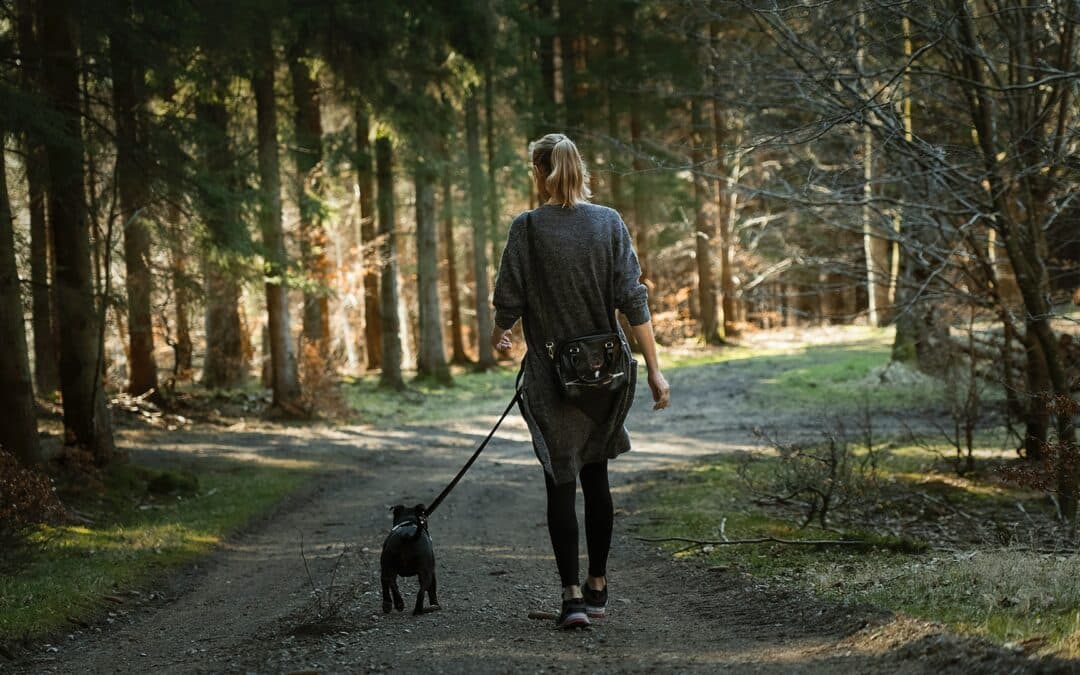Is It hot enough outside to fry an egg on the sidewalk?
With temperatures that often exceed 100 degrees Fahrenheit during the day and stay in the high 80s at night, our beautiful community of Gilbert, Arizona is definitely a hot one. And even though dogs need to go outside every day, the heat in summer is not easy on them. High temperatures can lead to life-threatening heatstroke and severely burned paw pads.
The Dangers of Walking Your Dog in the Summer
When you step outside for a few minutes during the day, it can be easy to feel like the heat is tolerable. However, you are most likely wearing shoes or sandals, and you’re not sporting a thick fur coat. Even with a sweet haircut, your dog is still retaining more body heat than you do, and their bare paws are at risk of burns from hot pavement, stones, sand, and even dry grasses!
Heatstroke is also common in the summer, especially with dogs that have heavy coats. Puppies, senior dogs, and dogs that are sick also have a higher risk of heatstroke. Dogs should never be left inside of cars, or left outside without water and adequate shade. Heatstroke and dehydration can quickly cause organ failure and death.
Arizona’s Hot Climate Can Make Summer Walks Painful
Sidewalks can reach temperatures of up to 125 degrees in only 70-degree weather. They get so hot during the summer in Arizona that you literally could cook an egg on the sidewalk (although we do not recommend eating it).
Asphalt heats up even higher, ranging from 125 to 150 in 70-degree heat. Surfaces like rocks, sand, and dry grass will heat up as well, just slightly slower than pavement and asphalt. All of these surfaces can burn the paw pads of your pup, similar to you touching a hot pan. And the longer their feet touch the ground the worse the burns will be.
How to Keep Your Dog from Burning Their Paws
- Use the 7-second test. If you place your hand flat on the sunny pavement and can hold it there for more than 7 seconds without discomfort, then your pup should be alright for a walk. But keep in mind that different types of ground will heat differently and be sure to check that your pup is comfortable for their walk.
- Take walks during the coolest parts of the day, like early in the morning and at dusk.
- Use doggy boots! Your dog might look a little silly the first time you try them, but they will go a long to protect their tender paw pads. Boots are also a great idea for hiking, because they lessen the risk of cuts from sharp rocks.
How to Prevent Heatstroke and Dehydration
- NEVER leave your dog in a car. Cars can heat up extremely quickly, it can take minutes for your car to reach over 120 degrees Fahrenheit. Shade is no better, with temperatures rising about 40 degrees every 10 minutes.
- Give your dog access to water at all times. If your dog is not a big drinker adding a low or no sodium broth to their water can encourage drinking.
- If your dog is outside, make sure they have access to a small pool, drinking water, and adequate shade.
- Set up a cooling area in your home where large and furry dogs can cool down to help prevent heatstroke indoors.
Best Veterinary Care in Gilbert
Preventing burns and overheating can help you have a summer of fun with your pup, even in Arizona!
But if you think your dog has experienced heatstroke, or if they have burned their paw pads, the team at East Valley Animal Hospital can help. We offer the best care and will work tirelessly to get your pet feeling their best.
Heatstroke, extreme dehydration, second-degree burns, and third-degree burns are all considered veterinary emergencies, and you should seek veterinary care right away.
Give us a call (at 480-892-1577) if you are worried about your dog and let us help you. At East Valley Animal Hospital your pet is our main priority at all times, by calling when you are on your way we can have staff ready, or in some cases direct you to another facility, ensuring there is no time wasted.
Images used under creative commons license – commercial use (7/20/23). Photo by Martin Dalsgaard on Unsplash.

